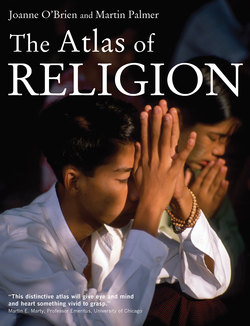Читать книгу The Atlas of Religion - Joanne O'Brien - Страница 40
На сайте Литреса книга снята с продажи.
ОглавлениеThe creation of pan-Native American movements in the USA and Canada to formulate a common Native Religion is a conscious attempt to return to roots and reclaim identity. This has flowed through American society and into Europe, particularly in the New Age milieu which has adopted elements of traditional practice such as shaman groups, medicine lodges and sweat lodges. Over the past few decades, specific forms of Paganism have been arising in different countries around the world as people have sought to retrieve what they perceive to be a more ‘authentic’ religious tradition that is closely tied with the culture or mythology of their nation. Celtic Druidry draws inspiration from the Celtic traditions of England, Wales, Scotland, Ireland and Brittany. Heathenry, a branch of Paganism drawing on Anglo-Saxon and Norse mythology, seeks to revive Northern Europe’s pre-Christian traditions. Shamanism, with its underlying belief that an individual in an alternative state of consciousness can travel between various different worlds, is active in Siberia, in the USA amongst Native Americans, and in Latin America, Indonesia, Asia and Europe. Practised by indigenous people worldwide, Shamanism is also emerging as a new spiritual movement in New Age and Pagan communities in many industrialized countries. The slave trade between Africa and the Americas, from the 16th to the 19th centuries, blended African indigenous religions with Christianity and the traditions of the Caribbean, Central and South America. In Brazil, syncretized religions are followed by almost 5 percent of the population, and 15 percent are engaged in rites while also belonging to a major faith. Many of the followers of Santeria in Cuba are also professing Catholics and, in Haiti, Vodoun is officially recognized as a religion.
Copyright © Myriad Editions Limited
40
